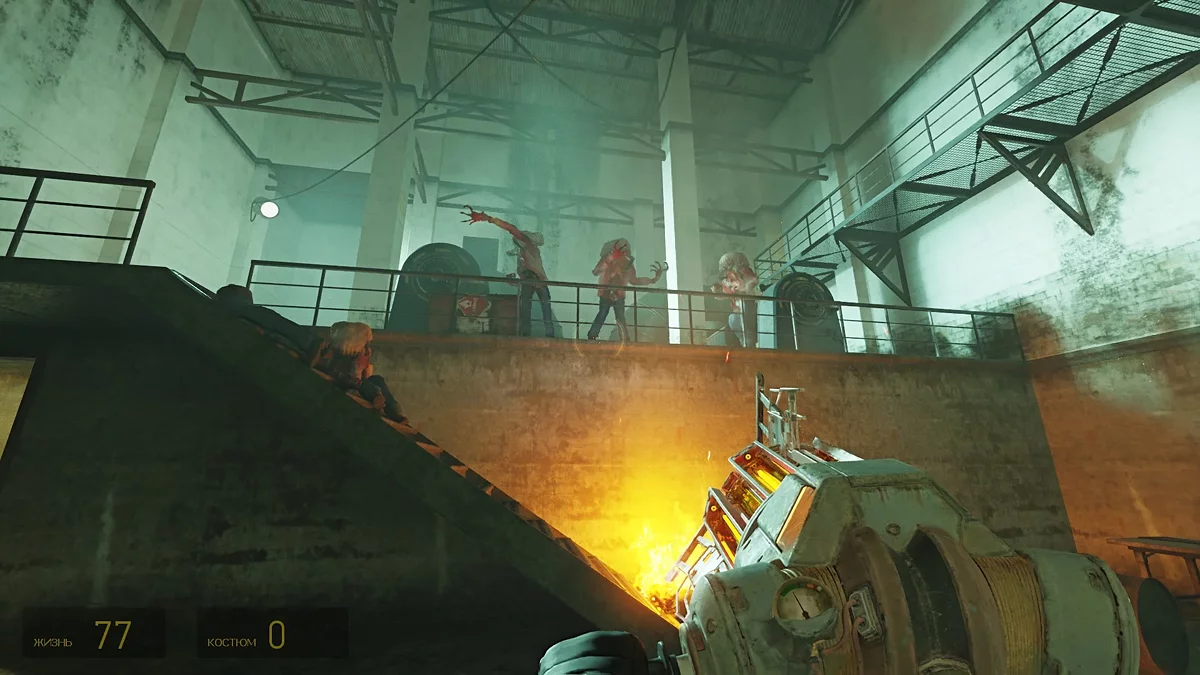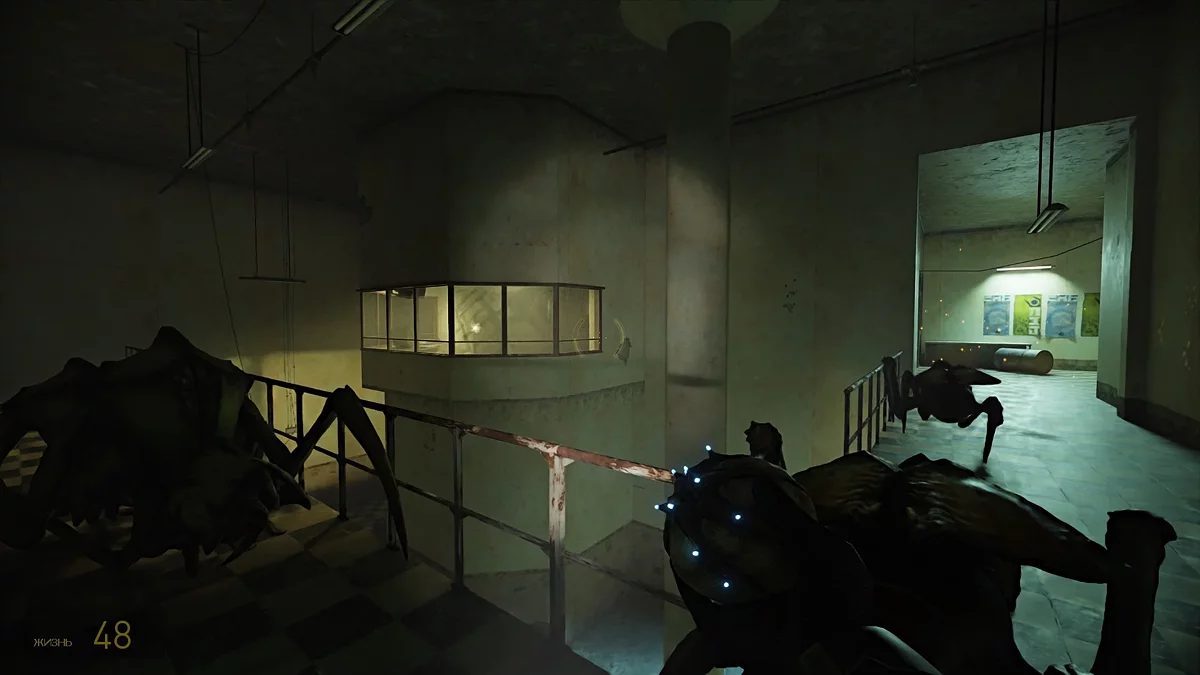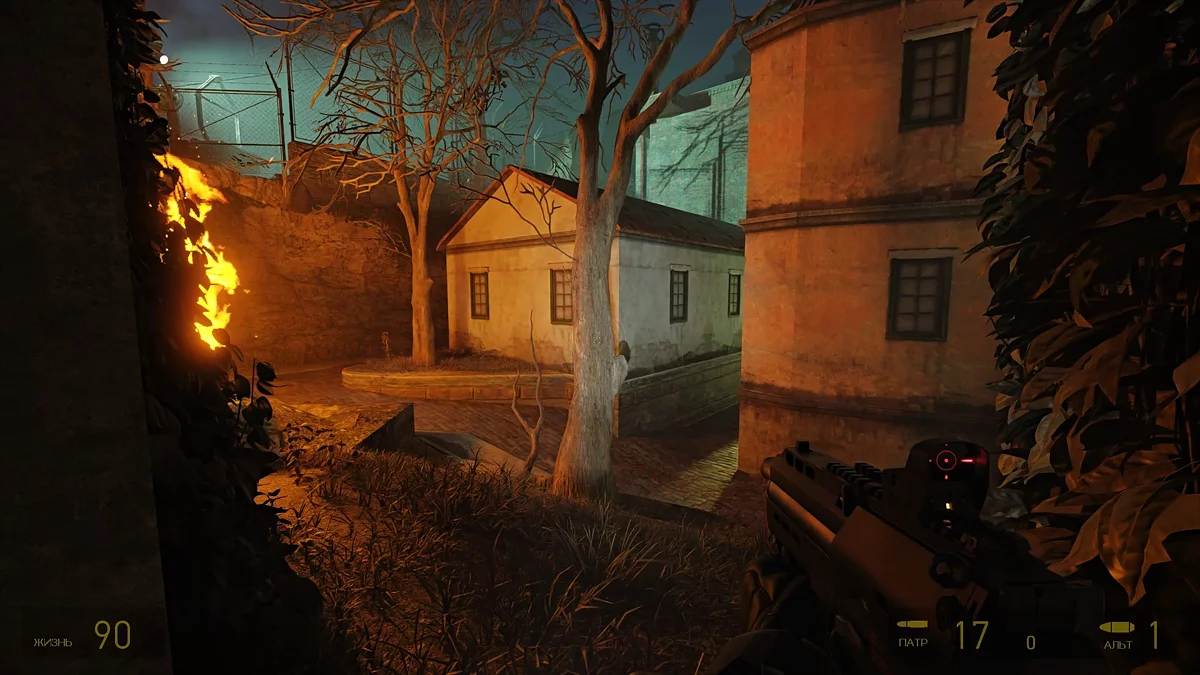Half-Life 2 RTX Preview. Can it be without ray tracing?

For the past two years, we've been hearing that the announcement of the next game in the Half-Life series is just around the corner. There's hidden code in Deadlock updates, developer portfolio activities, dataminer discoveries, secret insider information, and a plethora of other rumors that are hard to take seriously without a tinfoil hat. While Valve is safeguarding its main franchise for better times and diligently working on other equally important things, the fan community is tirelessly supporting Half-Life and keeping the renowned title from fading into oblivion. Modifications, total conversions, short films, and even music compilations are just a small part of the content that keeps one of the most significant series in the history of the gaming industry alive.
Last year, Half-Life 2 celebrated another anniversary. The sequel, mind you, is already 20 years old! During the year of celebration, NVIDIA announced a remaster, which was supposed to update all the art content along with the addition of the trendy ray tracing. Unfortunately, the developers didn't quite hit the release date, and Half-Life 2 celebrated its birthday without a major update. Only six months later, we finally received a tiny portion of the promised remaster in the form of an hour-long demo. We couldn't ignore such a release and tested the «modernized» Half-Life 2 on an RTX graphics card. Does the game need a remaster? How much has the visual changed? And is it worth buying a GeForce RTX 5090 for a 20-year-old game?
Was a remaster needed?
Half-Life 2 is one of those games that doesn't age with time. It was released at the perfect time when 3D shooters no longer looked like a «sharp-polygonal» mess but hadn't yet turned into «one-button» corridor blockbusters. The setting, story, art design, balance, maps, atmosphere, and narrative pace are the absolute standard that only a few have been able to approach in the last 20 years.
Only the textures and models are subject to aging, which, although not looking bad even now, clearly needed additional polygons and higher resolution. This is exactly what the Orbifold studio, formed from the modding community and brought in by NVIDIA for the remaster development, focused on. In their portfolio, the developers have Half-Life 2: Remade Assets, Project 17, and Raising the Bar: Redux — quite decent modifications in terms of content and art.
Along with new models and textures, Half-Life 2 RTX introduced an updated version of ray tracing, accelerated texture unpacking, and the Multi Frame Generation feature. It's not exactly what we wanted to see in a remaster, but in Portal RTX, these trendy features significantly enhanced the overall visuals. However, until the demo release, it was hard to imagine how the new lighting method would affect the overall atmosphere, as it is the fundamental cornerstone of the sequel's longevity.
Have you played Half-Life 2?
A Remaster with «Tied Hands»
After downloading the demo and installing the mandatory driver updates, we launched the game and saw the good old Source engine, to which NVIDIA's new technologies were «patched in». There's a high chance that Valve did not provide Orbifold Studios with the engine's source code and agreed to the release of the remaster as a standard «fan-made modification». Even before starting the game, we already understood what to expect. Source, without the source code, is heavily limited, and that's why fan remasters on this engine often hit a dead end.
The first location for familiarization was Ravenholm. In the original, it's a creepy and atmospheric location where the player fights zombies and headcrabs using the gravity gun. The first thing that stands out in the remaster is the terrible optimization. We had to spend a long time fiddling with the settings in a config separate from the game itself to more or less stabilize the image and balance the framerate. To reiterate, we were prepared for optimization issues, as the limitations on the number of polygons and texture resolution in the engine exist for a reason. But with ray tracing, you will, in any case, get either a blurry image, frames drawn by neural networks, or an experience from 2004, when Half-Life 2 was released and many PC's couldn't handle it.
The lighting from ray tracing not only «kills» optimization to zero but also significantly ruins what Half-Life 2 is remembered for by many — the atmosphere. Yes, in some places where there are minimal artificial light sources, the remaster is almost indistinguishable from the original. But as soon as you enter a room or step onto a street with lighting, the difference becomes obvious. Areas that were meant to scare and hide hordes of zombies in the shadows are now illuminated. The effect of surprise and suddenness has disappeared without a trace. The color palette has become warmer, and the original greenish tint can barely be noticed only in places not overexposed by ray tracing.

It's quite difficult to describe exactly what's wrong with the lighting in Half-Life 2 RTX. If you've played the original multiple times, you'll immediately notice the changes that don't benefit Ravenholm. The streets are too bright, but at the same time, the readability of the geometry has noticeably worsened. The abundance of yellow in the lighting makes the image bright and unnatural. However, in some places, the ray tracing looks great, especially in dimly lit locations and the Nova Prospekt prison, where you'll be sent in the demo after passing through Ravenholm. A standard solution to the lighting issues could be the combined use of lighting technologies. In enclosed spaces and areas important for game design, classic «baked» lighting could be used, while in open areas and places with a lot of geometry, ray tracing could be enabled.
The developers claim that the ray tracing is accelerated by the AI-based Radiance Cache technology. On paper, this feature should adapt to game data and quickly provide «correct» lighting, but in practice, owners of RTX graphics cards from the 30 and 40 series experience artifacts (very noticeable dots) when frames change abruptly. Apparently, the technology didn't have enough time to fully train during the demo version.
In addition to lighting, the remaster introduced realistic reflections and smoke and fog effects from RTX Volumetrics. We couldn't fully appreciate them, as the locations in the demo aren't the most suitable for these technologies
The standard brush models, from which level geometry and environments are built, have received more details. Windows in buildings are now not just textures with bump mapping (the effect of textured relief on a flat surface) but objects created from scratch in the Hammer level editor. All protruding architectural and decorative elements have been redesigned for better interaction with the new lighting.
Redrawn from scratch
We personally awaited Half-Life 2 RTX not for the trendy ray tracing, but for the updated art content. The developers from Orbifold reworked all the assets, bringing them up to modern standards. Every element of the environment has become highly detailed and polygonal. At the same time, the improvements don't stand out or disrupt the overall picture. At first glance, the remaster screenshots are almost indistinguishable from the original, but changes are there, and they are significant.
The models of weapons, decorations, and enemies have become less angular. Meanwhile, the environment itself has hardly changed, but in Nova Prospekt, there are places that differ from the original. For instance, in some areas, there were concrete debris, and in the new version, a pile of construction materials has been added to remove the floating shards. There are many such small details in the demo, but if you haven't played the original in a long time, you're unlikely to notice them.
Despite the fully redrawn assets and modern lighting, the remaster doesn't come close to the graphics level of Half-Life: Alyx, which will be five years old this year. It seems the developers wanted to maintain Valve's original vision and avoid the classic «modding mishmash». And that's commendable, as this is a remaster, not a remake. Any, even minor, changes can cause discontent among fans. But if you're reworking assets, why not remove the excessive angularity of the location geometry? Nova Prospekt prison, even with all the improvements, still looks very empty and sterile. Just slightly adding volume to the walls and smoothing out sharp corners with barely noticeable rounding could significantly enhance the visuals.

Final Impressions
The impressions from the Half-Life 2 RTX demo are mixed. On one hand, upon release, we will get exactly the same game with barely noticeable redrawn models in the overall picture, but with severe lag and RTX 5090 in the system requirements. Many areas in Ravenholm have lost their atmosphere due to the new lighting. Overexposures only emphasize the outdated geometry and the poverty of decorations. The eye literally catches not on the improvements, but on what should have been improved first.
On the other hand, there's not much desire to wait for Half-Life 2 RTX just to replay the classic with a new twist. Yes, the lighting is more realistic, but it tends to highlight the game's age rather than mask it. Fans will eventually add the improved models as a separate mod, without ray tracing. After the visually stunning Black Mesa, which, by the way, was also made by fans, it's quite sad to see what kind of remaster the Half-Life sequel will ultimately receive with NVIDIA's support.
Have you already tried the Half-Life 2 RTX demo?
***
The Half-Life 2 RTX demo clearly showed what awaits us at release. In Ravenholm, due to the new lighting, there are issues with atmosphere and overexposure in areas where there was darkness in the original. Nova Prospekt prison looks much better with the new technologies, but its outdated geometry and low detail negate all the graphical enhancements. At best, this will be a remaster that only owners of top-tier graphics cards can run. At worst, it will be a product far from the original, which fans will rebuild into an independent mod on Source 2 without NVIDIA's technologies.
We hope that Orbifold, the studio responsible for development and reworking all the assets, will listen to player feedback and fix the shortcomings by the release version. Either way, there is no official date yet, which means there is still a chance for a worthy remaster.
-
Viktor Antonov, Art Director of Half-Life 2 and Dishonored, Has Passed Away (Updated)
-
Artist Viktor Antonov has gone. We Remember the Creative Path of the Author of the Unique Style of Half-Life 2 and Dishonored
-
Half-Life 2 RTX Demo Coming in March — New Gameplay Trailer Released
-
Half-Life 2 RTX Remaster Demo Now Available on Steam
-
Half-Life 2 RTX Remaster Shows Stunning Visual Upgrades























